
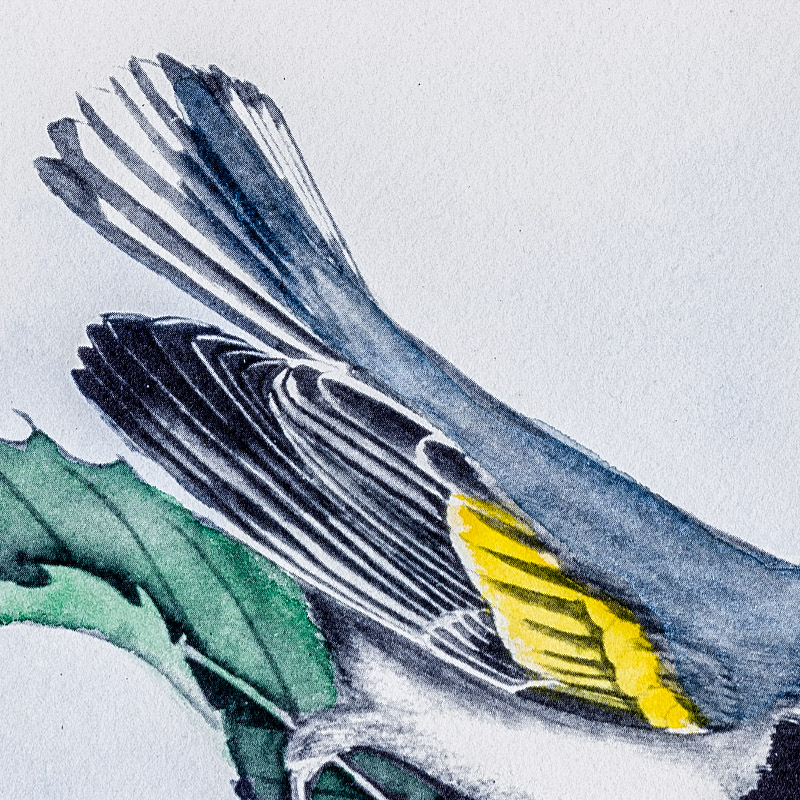
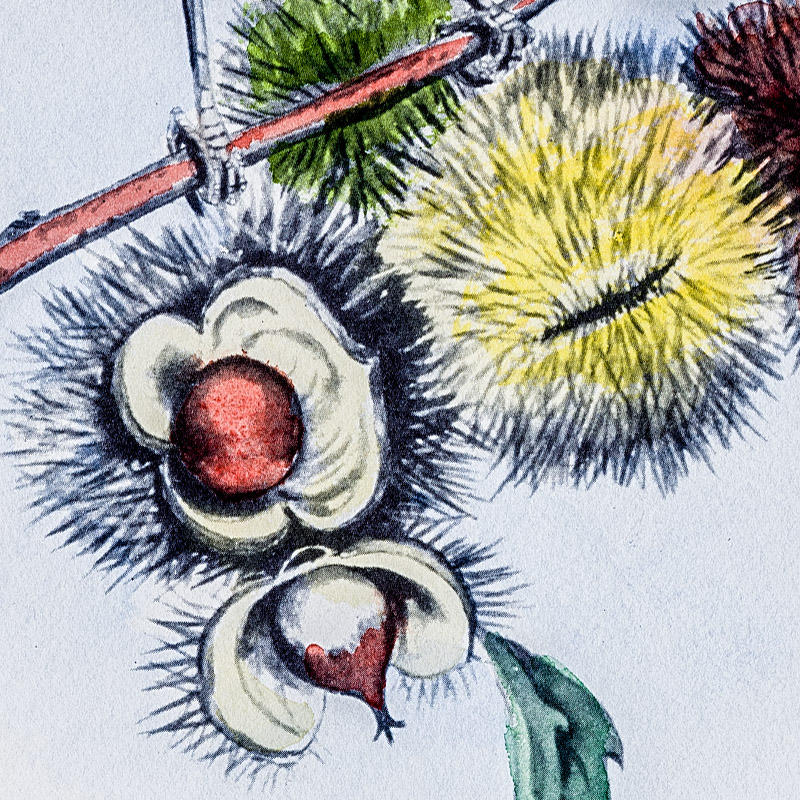
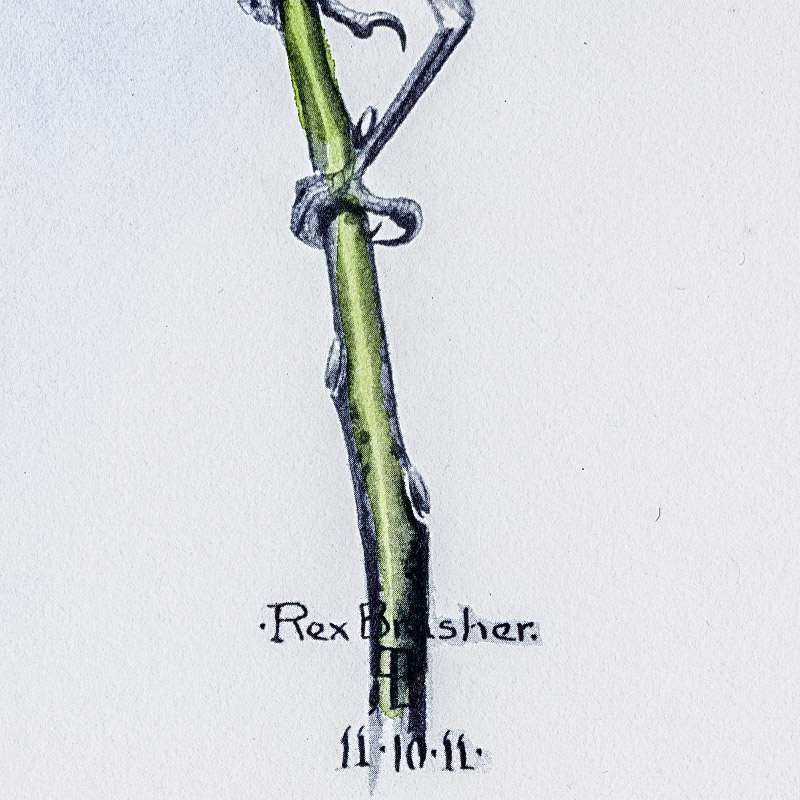
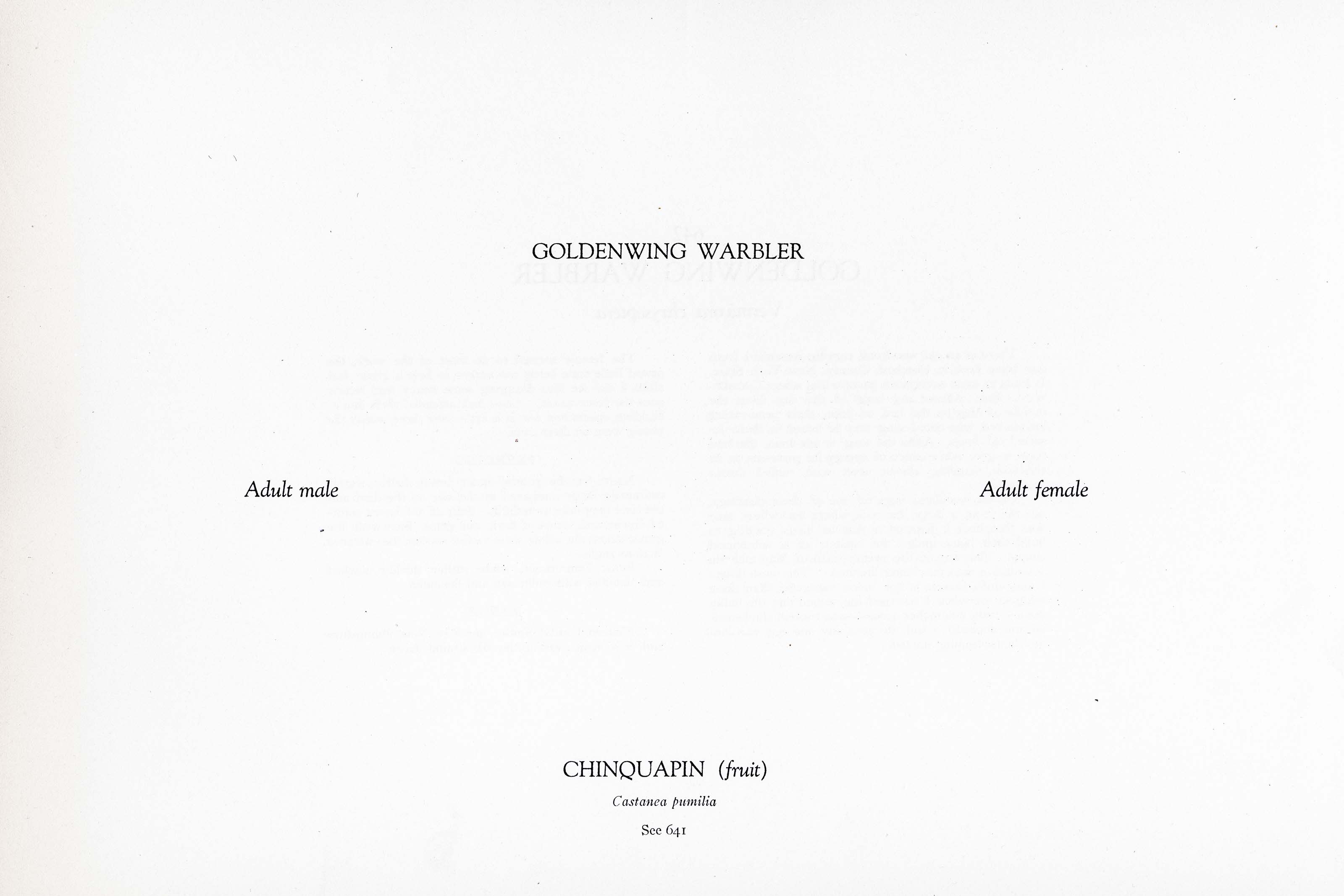
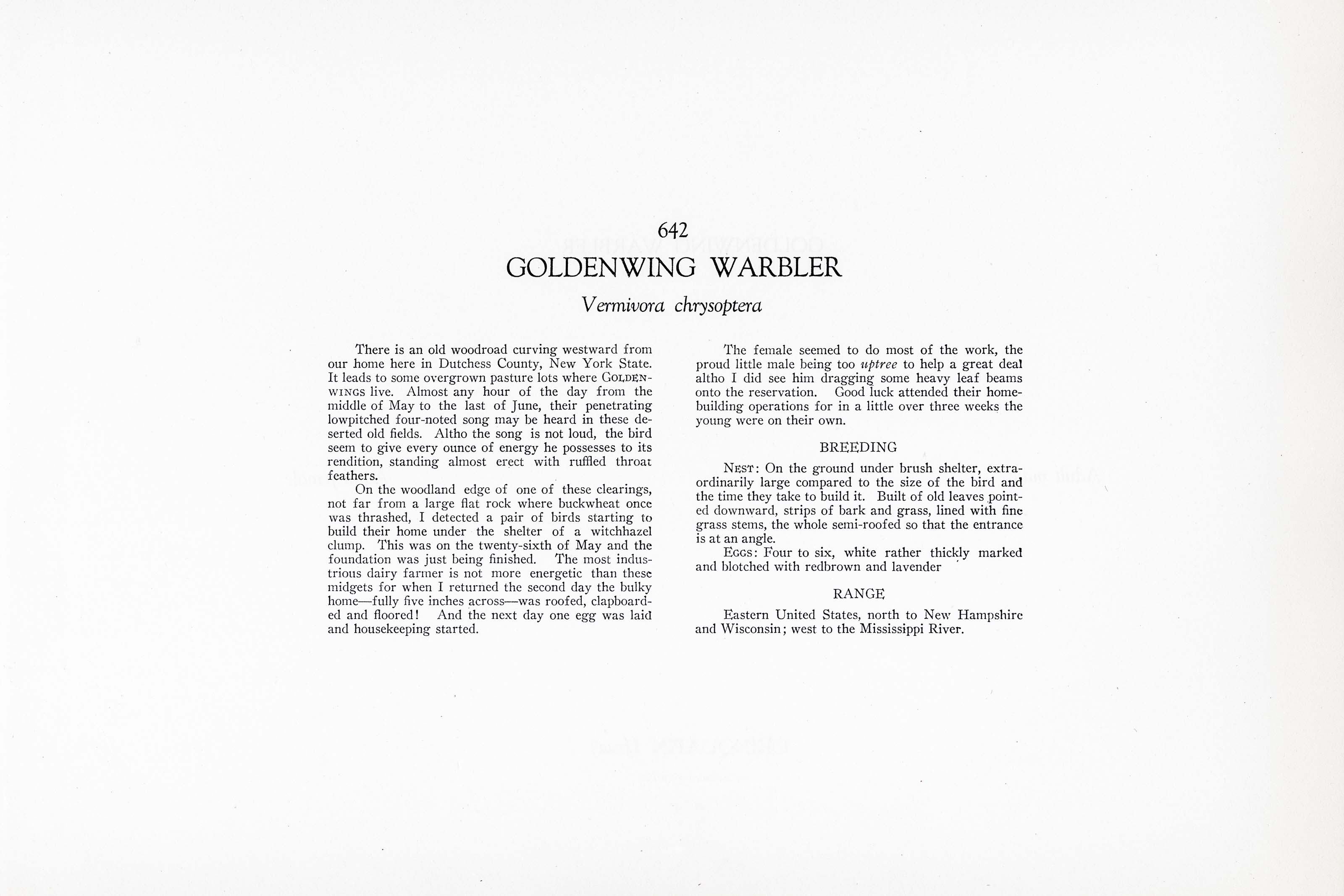

1911
1930
11
642
A team of dedicated board members, volunteers, and student interns has published every page in Volume 9. This volume includes 360 images of paintings and lyrical descriptions of birds, now available online for everyone to enjoy anywhere in the world. This is a monumental task. Each volume requires approximately 400 hours to photograph, edit, transcribe, catalog, and publish online. We need your support to complete this work.
If you're tech-savvy, have a good eye, are meticulous with details, and love structured data, please consider volunteering by emailing us at hello@rexbrasher.org.
We encourage all bird lovers and supporters to consider a monetary donation to support our mission to make Rex's work available for everyone. You can provide a one-time or recurring donation online.
There is an old woodroad curving westward from our home here in Dutchess County, New York State. It leads to some overgrown pasture lots where GOLDENWINGS live. Almost any hour of the day from the middle of May to the last of June, their penetrating lowpitched four-noted song may be heard in these deserted old fields. Altho the song is not loud, the bird seem to give every ounce of energy he possesses to its rendition, standing almost erect with ruffled throat feathers.
On the woodland edge of one of these clearings, not far from a large flat rock where buckwheat once was thrashed, I detected a pair of birds starting to build their home under the shelter of a witchhazel clump. This was on the twenty-sixth of May and the foundation was just being finished. The most industrious dairy farmer is not more energetic than these midgets for when I returned the second day the bulky home — fully five inches across — was roofed, clapboarded and floored! And the next day one egg was laid and housekeeping started.
The female seemed to do most of the work, the proud little male being too uptree to help a great deal altho I did see him dragging some heavy leaf beams onto the reservation. Good luck attended their homebuilding operations for in a little over three weeks the young were on their own.
NEST: On the ground under brush shelter, extraordinarily large compared to the size of the bird and the time they take to build it. Built of old leaves pointed downward, strips of bark and grass, lined with fine grass stems, the whole semi-roofed so that the entrance is at an angle.
EGGS: Four to six, white rather thickly marked and blotched with redbrown and lavender.
Eastern United States, north to New Hampshire and Wisconsin; west to the Mississippi River.
A small tree averaging 40 feet high, with a heavy trunk sometimes three feet in diameter, distributed from southern Pennsylvania to the valley of the Neches River, Texas. Shrubby in the east, arborescent in western part of its range.